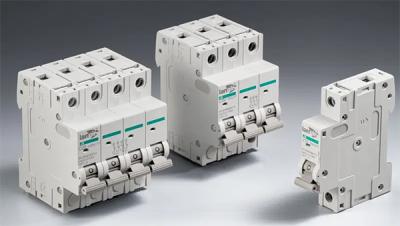In recent years, the global shift toward renewable energy systems, electric mobility, and decentralized power distribution has driven an increasing demand for safe, reliable, and efficient DC circuit breakers. Unlike their AC counterparts, DC circuit breakers must deal with the challenge of extinguishing arcs in a continuous current flow—without the benefit of zero-crossing points. Therefore, understanding how to choose the right DC circuit breaker is essential for ensuring both system performance and safety.This article serves as a step-by-step guide to help engineers, installers, and system integrators make informed decisions when selecting a DC circuit breaker for their specific application.
Understand the System Application and Use Environment
The first step in selecting a proper DC circuit breaker is identifying the specific type of system where it will be deployed. This determines key performance criteria and guides your selection process.a) Solar Photovoltaic (PV) SystemsIn PV systems, DC circuit breakers are used to protect strings and arrays from overcurrent faults. These systems often operate at voltages up to 1000V DC or more. A high-quality DC breaker ensures that faults don’t cascade across multiple strings, reducing the risk of fire and equipment damage.b) Battery Energy Storage Systems (BESS)BESS installations rely on accurate overcurrent protection to avoid thermal runaway or internal short circuits. Since batteries can supply high currents instantly, breakers must act fast and have strong arc-quenching capability.c) Electric Vehicle Charging InfrastructureDC fast-charging stations operate at high voltages (400V–1000V) and currents (hundreds of amps). Circuit breakers in such systems must manage both bidirectional current flow and fast switching dynamics, ensuring the safety of vehicles and users.d) Industrial DC DistributionIn industrial automation, robotics, and process control, DC systems are preferred for their efficiency and precision. Here, circuit breakers must respond reliably to faults that could otherwise halt production or damage expensive equipment.
Safety and Standards Compliance
The best DC circuit breakers conform to recognized international standards, offering peace of mind that they’ve been tested for real-world performance.Common standards include:IEC 60947-2: Low-voltage circuit breaker standardEN60947-2: European equivalent of the aboveGB 14048.2: Chinese national standard for low-voltage switchgearProducts with these certifications provide verifiable assurance that the breakers will perform under fault conditions without posing danger to equipment or personnel.
Finding a Reliable Source for DC Circuit Breakers
Even the best technical specifications mean little without reliable sourcing. A trustworthy supplier should offer:A wide range of voltage and current optionsBreakers from 1 to 4 polesCustomization support for OEM projectsDetailed datasheets and test certificationsFast delivery and technical supportExplore a professional range of DC circuit breakers here:https://www.langir.com/dc-circuit-breaker/
Conclusion
The process of selecting the right DC circuit breaker is both technical and practical. By understanding your application, carefully evaluating electrical and mechanical requirements, and ensuring compliance with safety standards, you can build a system that is efficient, durable, and most importantly—safe.Whether you're designing a residential PV system or building a large-scale DC microgrid, using a high-quality DC circuit breaker is an essential investment in the integrity of your power infrastructure.
https://www.langir.com/dc-circuit-breaker/